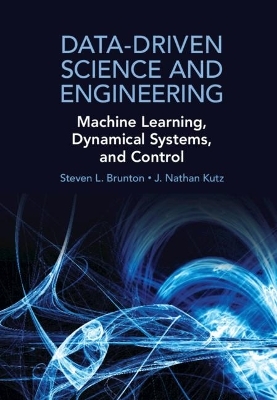
Data-Driven Science and Engineering
Cambridge University Press (Verlag)
978-1-108-42209-3 (ISBN)
- Titel erscheint in neuer Auflage
- Artikel merken
Data-driven discovery is revolutionizing the modeling, prediction, and control of complex systems. This textbook brings together machine learning, engineering mathematics, and mathematical physics to integrate modeling and control of dynamical systems with modern methods in data science. It highlights many of the recent advances in scientific computing that enable data-driven methods to be applied to a diverse range of complex systems, such as turbulence, the brain, climate, epidemiology, finance, robotics, and autonomy. Aimed at advanced undergraduate and beginning graduate students in the engineering and physical sciences, the text presents a range of topics and methods from introductory to state of the art.
Steven L. Brunton is Associate Professor of Mechanical Engineering at the University of Washington. He is also Adjunct Associate Professor of Applied Mathematics and a Data-Science Fellow at the eScience Institute. His research applies data science and machine learning for dynamical systems and control to fluid dynamics, biolocomotion, optics, energy systems, and manufacturing. He has co-authored two textbooks, received the Army and Air Force Young Investigator awards, and was awarded the University of Washington College of Education teaching award. J. Nathan Kutz is the Robert Bolles and Yasuko Endo Professor of Applied Mathematics at the University of Washington, and served as department chair until 2015. He is also Adjunct Professor of Electrical Engineering and Physics and a Senior Data-Science Fellow at the eScience Institute. His research interests are in complex systems and data analysis where machine learning can be integrated with dynamical systems and control for a diverse set of applications. He is an author of two textbooks and has received the Applied Mathematics Boeing Award of Excellence in Teaching and an NSF CAREER award.
Part I. Dimensionality Reduction and Transforms: 1. Singular value decomposition; 2. Fourier and wavelet transforms; 3. Sparsity and compressed sensing; Part II. Machine Learning and Data Analysis: 4. Regression and model selection; 5. Clustering and classification; 6. Neural networks and deep learning; Part III. Dynamics and Control: 7. Data-driven dynamical systems; 8. Linear control theory; 9. Balanced models for control; 10. Data-driven control; Part IV. Reduced-Order Models: 11. Reduced-order models (ROMs); 12. Interpolation for parametric ROMs.
| Erscheinungsdatum | 02.03.2019 |
|---|---|
| Zusatzinfo | Worked examples or Exercises |
| Verlagsort | Cambridge |
| Sprache | englisch |
| Maße | 184 x 261 mm |
| Gewicht | 1190 g |
| Themenwelt | Informatik ► Datenbanken ► Data Warehouse / Data Mining |
| Informatik ► Theorie / Studium ► Künstliche Intelligenz / Robotik | |
| Mathematik / Informatik ► Mathematik ► Angewandte Mathematik | |
| Mathematik / Informatik ► Mathematik ► Finanz- / Wirtschaftsmathematik | |
| ISBN-10 | 1-108-42209-8 / 1108422098 |
| ISBN-13 | 978-1-108-42209-3 / 9781108422093 |
| Zustand | Neuware |
| Informationen gemäß Produktsicherheitsverordnung (GPSR) | |
| Haben Sie eine Frage zum Produkt? |
aus dem Bereich


